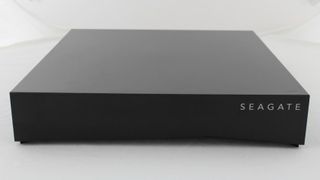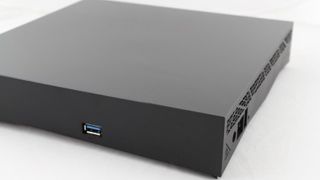Why you can trust TechRadar
Streaming, Seagate Dashboard and SDrive
Many of the software features of the Personal Cloud are achieved with desktop software for both PC and Mac. Seagate Dashboard is used for automatic system backups to the Personal Cloud, and interestingly, it also allows Android users to back up their mobile devices. Video, music and pictures can be shared directly to social media.

The SDrive software is used to set up remote users, providing them with local access to the files on their private folders on the Personal Cloud – and it adds end-to-end encryption to file transfers.
Finally, the SeagateMedia app is used for streaming content, either locally or remotely, from the Personal Cloud. We're pleased to see it's not just available for Android and iOS but also Windows Phone and Amazon Kindle devices. After entering your account details, the app shows the number of documents, videos, pictures and songs on the device and allows you to load them and view them.
Note that to use this feature outside your local network, you will need to open a port in your router's firewall. If your router has UPnP enabled, this happens automatically, but otherwise you'll need to add port 39076 to its port forwarding page. Port 51413 is required to be open for torrent downloading as well.

Performance
We tested the Personal Cloud in two ways – as a NAS for local file access, like any other, and we also tested its streaming capabilities, using the SeagateMedia app. For this, we tried access via both local wireless over an 802.11ac network and over Three UK's 3G mobile network.
With a 15GB 1080p rip of Avatar, with a total bitrate of 10943 Kb/sec, streaming over wireless to an iPad was extremely smooth. After a short period of buffering, we were able to easily fast forward and zip around the film without any lag at all.
Things were a bit different over a mobile connection though. The app took a while to buffer data, then was unable to keep up with the movie, although perhaps a 4G connection would work better. Nevertheless images and music still work fine at these slower speeds.
We also ran Intel's NAS Performance Toolkit on the Personal Cloud, along with a file copy back and forth with two 5GB folders of large and small files.

Here are the benchmark results in full:
Intel NAS Performance Toolkit (MB/sec, higher is better)
- HD Video: 89.7
- 2x HD Video: 106.6
- 4x HD Video: 95.9
- HD Record: 48.4
- HD Playback Record: 79.9
- Content Creation: 8.5
- Office Productivity: 57.2
- File Copy To NAS: 59.5
- File Copy From NAS: 79.8
- Directory Copy To NAS: 6.4
- Directory Copy From NAS: 12.4
- Photo Album: 10.3
Robocopy (MB/sec, higher is better)
- Large Files Read: 81.2
- Large Files Write: 53.8
- Small Files Read: 70.3
- Small Files Write: 31.7
These results are roughly in line with Synology's entry-level NAS units, although the write speeds are notably lower. Anything involving writing data to the NAS is between 50% and 75% slower than the speeds recorded when testing the DS115J. Given that unit is diskless, but a lot cheaper, these write speed results are a tad disappointing.
Finally, I also measured its power consumption. With torrents downloading and files being written to the hard disk, I measured 15.6W of power being used, while this dropped to 12.8W when the unit was idle. Not bad results for a NAS with two hard disks.

